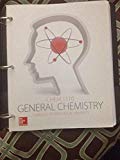
(a)
Interpretation:
The rate of the hydrogen gas evolution will be increased, decreased, or unchanged with the given information has to be stated.
Concept introduction:
Reaction: Substances which are mutually involved each other in a chemical process and changed into different substances.
To state the rate of the hydrogen gas evolution will be increased, decreased, or unchanged when 6g of powdered
(b)
Interpretation:
The rate of the hydrogen gas evolution will be increased, decreased, or unchanged with the given information has to be stated.
Concept introduction:
Reaction: Substances which are mutually involved each other in a chemical process and changed into different substances.
Rate of reaction: It represents the speed at which a chemical reaction runs. How much concentration of reactants consumed and how much concentration of product formed in a unit of time is said to be rate of reaction.
To state the rate of the hydrogen gas evolution will be increased, decreased, or unchanged when 4g of granulated
(c)
Interpretation:
The rate of the hydrogen gas evolution will be increased, decreased, or unchanged with the given information has to be stated.
Concept introduction:
Reaction: Substances which are mutually involved each other in a chemical process and changed into different substances.
Rate of reaction: It represents the speed at which a chemical reaction runs. How much concentration of reactants consumed and how much concentration of product formed in a unit of time is said to be rate of reaction.
To state the rate of the hydrogen gas evolution will be increased, decreased, or unchanged when 2M acetic acid is used instead of 2M
(d)
Interpretation:
The rate of the hydrogen gas evolution will be increased, decreased, or unchanged with the given information has to be stated.
Concept introduction:
Reaction: Substances which are mutually involved each other in a chemical process and changed into different substances.
Rate of reaction: It represents the speed at which a chemical reaction runs. How much concentration of reactants consumed and how much concentration of product formed in a unit of time is said to be rate of reaction.
To state the rate of the hydrogen gas evolution will be increased, decreased, or unchanged when temperature is raised to
Want to see the full answer?
Check out a sample textbook solution
Chapter 19 Solutions
Chemistry: Atoms First V1
- What is the product of the following reaction? Please explain what is happening in this question. Provide a detailed explanation and a drawing showing how the reagent is reacting with the catalysts to product the correct product. The correct answer is B.arrow_forwardWhat is the missing intermediate 1 and the final product 2. Please include a detailed explanation explaining the steps of malonic ester synthesis. Please include drawings of the intermediate and how it occurs and how the final product is former.arrow_forwardWhat would be the reagents and conditions above and below the arrow that will complete the proposed acetoacetic ester synthesis? If it cannot be done efficiently, then I will choose that answer. There could be 2 or 4 reagents involved. Please provide a detailed explanation and drawings showing how it would proceed with the correct reagents.arrow_forward
- For benzene, the ∆H° of vaporization is 30.72 kJ/mol and the ∆S° of vaporization is 86.97 J/mol・K. At 1.00 atm and 228.0 K, what is the ∆G° of vaporization for benzene, in kJ/mol?arrow_forwardThe reaction Q(g) + R(g) → Z(l) is shown to be exothermic. Which of the following is true concerning the reaction. it is spontaneous only at High T, it is spontaneous at low T it is nonspontaneous at all T it is spontanrous at all T. it is non spontaneous only at low T.arrow_forwardThe reaction Q(g) + R(g) → Z(l) is shown to be exothermic. Which of the following is true concerning the reactionarrow_forward
- Which of the following has the largest standard molar entropy, S° (298.15 K) He H2 NaCl KBr Hgarrow_forwardWhich of the following is true for a particular reaction if ∆G° is -40.0 kJ/mol at 290 K and –20.0 kJ/mol at 390 K?arrow_forwardWhat is the major product of the following reaction? O O OH OH 1. BH 2. H₂O₂, NaOH OH OHarrow_forward
 Chemistry by OpenStax (2015-05-04)ChemistryISBN:9781938168390Author:Klaus Theopold, Richard H Langley, Paul Flowers, William R. Robinson, Mark BlaserPublisher:OpenStax
Chemistry by OpenStax (2015-05-04)ChemistryISBN:9781938168390Author:Klaus Theopold, Richard H Langley, Paul Flowers, William R. Robinson, Mark BlaserPublisher:OpenStax Introductory Chemistry: A FoundationChemistryISBN:9781337399425Author:Steven S. Zumdahl, Donald J. DeCostePublisher:Cengage Learning
Introductory Chemistry: A FoundationChemistryISBN:9781337399425Author:Steven S. Zumdahl, Donald J. DeCostePublisher:Cengage Learning Chemistry: The Molecular ScienceChemistryISBN:9781285199047Author:John W. Moore, Conrad L. StanitskiPublisher:Cengage Learning
Chemistry: The Molecular ScienceChemistryISBN:9781285199047Author:John W. Moore, Conrad L. StanitskiPublisher:Cengage Learning Chemistry for Engineering StudentsChemistryISBN:9781337398909Author:Lawrence S. Brown, Tom HolmePublisher:Cengage Learning
Chemistry for Engineering StudentsChemistryISBN:9781337398909Author:Lawrence S. Brown, Tom HolmePublisher:Cengage Learning Introduction to General, Organic and BiochemistryChemistryISBN:9781285869759Author:Frederick A. Bettelheim, William H. Brown, Mary K. Campbell, Shawn O. Farrell, Omar TorresPublisher:Cengage LearningChemistry: Matter and ChangeChemistryISBN:9780078746376Author:Dinah Zike, Laurel Dingrando, Nicholas Hainen, Cheryl WistromPublisher:Glencoe/McGraw-Hill School Pub Co
Introduction to General, Organic and BiochemistryChemistryISBN:9781285869759Author:Frederick A. Bettelheim, William H. Brown, Mary K. Campbell, Shawn O. Farrell, Omar TorresPublisher:Cengage LearningChemistry: Matter and ChangeChemistryISBN:9780078746376Author:Dinah Zike, Laurel Dingrando, Nicholas Hainen, Cheryl WistromPublisher:Glencoe/McGraw-Hill School Pub Co





